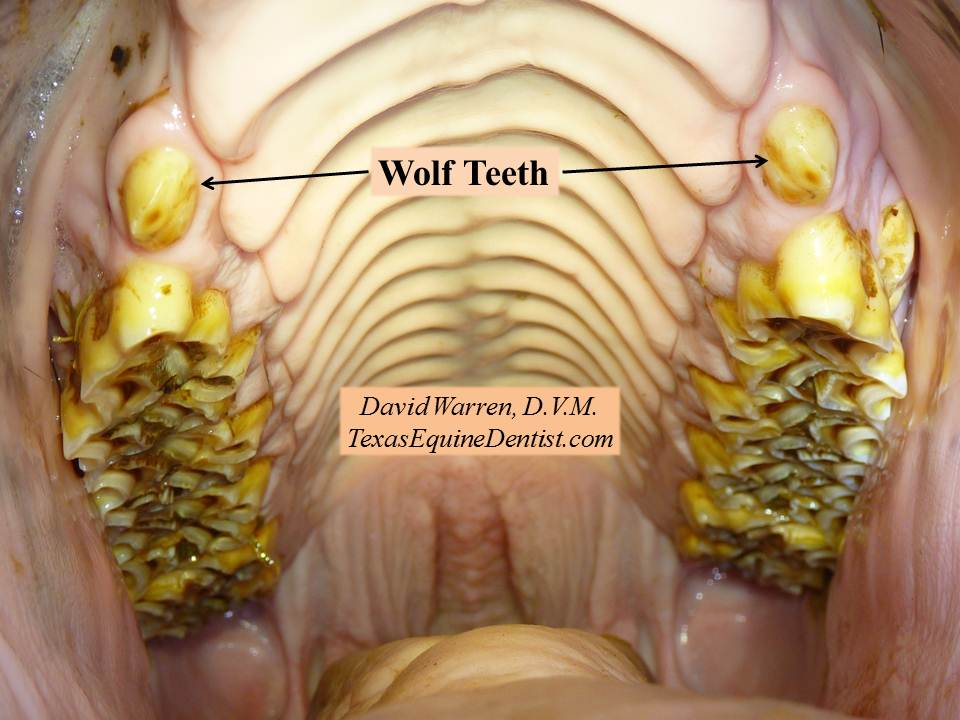Wolf teeth are small, shallow rooted teeth located just in front of the upper first cheek teeth and occasionally on the lower jaw. They erupt between 5-12 months of age and are found in both fillies and colts. Approximately 70% of horses will develop wolf teeth. They are often confused with canine teeth which are larger and located further forward in the bars of the mouth.
Since wolf teeth do not come into contact with other teeth, they are not used for chewing. According to fossil records, millions of years ago wolf teeth were similar in size to the rest of the cheek teeth and were used for grinding food. Back then, horses were small forest dwelling brush eaters, with all of the cheek teeth being smaller and narrower like those of sheep and goats. In these early horses there were seven functional cheek teeth in each row compared to the six in today’s horses.
Due to their location, wolf teeth can cause a painful response when they come in contact with the bit. It is standard procedure to extract wolf teeth to help prevent behavior issues such as head tossing, rearing, head tilting, and pulling against the bit.
David Warren, D.V.M.

